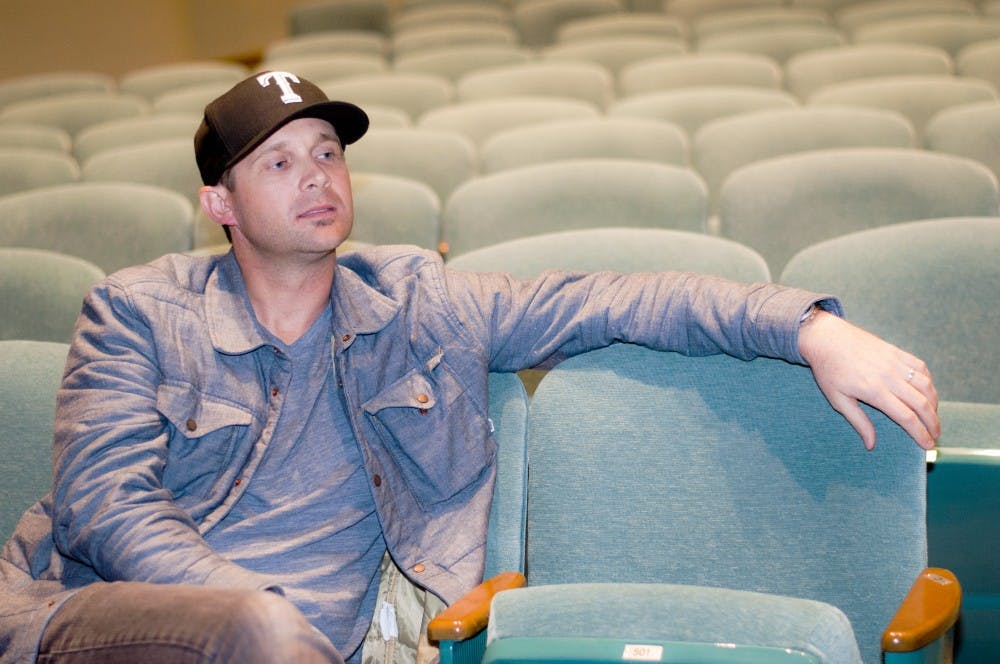Magician Jim Munroe creates artful illusions for his life work, at some points doing stunts involving knives. But he also is clear with the audience that the magic is not real — there is always something going on behind the scenes.
However, the magician’s biggest feat wasn’t done through smoke-and-mirror inventions. It was by the help of a stranger who would end up saving his life.
Munroe was 29 when he felt a sharp pain in his leg. As a former University of Texas baseball player, he knew pain, but nothing compared to this.
“It’s like a bomb went off inside your body,” Munroe said doctors told him.
Doctors diagnosed Munroe with a rare form of leukemia and said he would die in two months if they did not act quickly.
They told him about the possibility of a bone marrow transplant. After treating Munroe with chemotherapy to destroy cancer cells, doctors would need to find a near perfect DNA match to give blood, so his body could build a new immune system.
“My entire life hinged on one person,” Munroe said.
Out of 7 million possible donors, there were 16 potential matches. A 19-year-old blonde girl with bubbly handwriting was Munroe’s perfect match. She saved his life.
After the show Thursday at John R. Emens Auditorium, students flocked to the lobby to sign up with Be The Match, an organization that matches possible bone marrow donors to people in need. Be The Match allowed students at the event to sign up for free.
Freshman nursing major Juliana Booth signed up to be a donor. Booth said she had heard of bone marrow transplants and had seen Munroe’s type of scenario on medical TV shows.
“Getting the chance to save someone’s life, that’s just an amazing opportunity,” Booth said.
Munroe said minorities have the smallest pool of bone marrow donors and encouraged African Americans and Asians to sign up.
He travels around the world performing a magic show called “The MAZE.”
The show has two other members, Daniel Cullen as director and producer and Zak Mirzadeh as a magician.
For the final act, Munroe carefully drew an outline of his hand in red marker on a small block of wood. He pulled a black bag over his head. He duct taped the bag tightly around his neck, and he picked up a sharp knife.
“All the magic was fake,” Munroe said. “However, this is real.”
Munroe slowly began stabbing the knife in the spaces between his fingers. He moved his hand outside the red outline, and the crowd gasped. Finally, Munroe effortlessly guided the knife from space to space in quick motions, and the audience erupted in applause as the magic show ended.
While the first half of his show focused on entertainment, the second half focused on Munroe’s battle with cancer and his newfound Christian faith.
Munroe compared the “perfect blood” donation he received to the “perfect blood” Jesus provided to save him. Munroe called himself a former skeptic, who previously considered religion as ridiculous.
He said his lifesaving experience left him questioning, “How could there not be a God?”
Before Munroe began telling his story, he gave students the opportunity to leave the show, knowing it would be a religious presentation. The majority of the students stayed, but a small amount chose to leave.
“He was very mature in his delivery,” said Alex Powell, a junior political science major and member of Campus Crusade for Christ.
Powell said he enjoyed Munroe’s sarcastic demeanor in his performance.
“People weren’t pressured into religion,” Booth, who is also a member of CRU, said.
Junior marketing major Dawson Bowling chose to leave in the two-minute break before Munroe began sharing his Christian beliefs.
Bowling said he is an atheist and would rather sit down and have a religious dialogue where he could ask the questions.
“What people say [about religion] is not what I would want to ask them,” Bowling said.
Munroe said their mission is to start a conversation rather than to “convert people.” He encouraged students to fill out contacts cards to receive more information on Christianity.
In the end, Munroe encouraged students to be bone marrow donors, regardless of their religious beliefs or affiliations.





